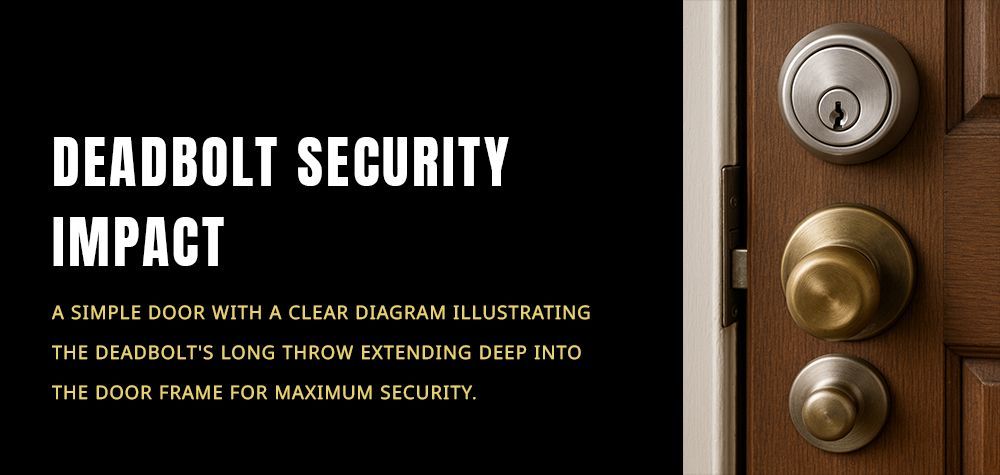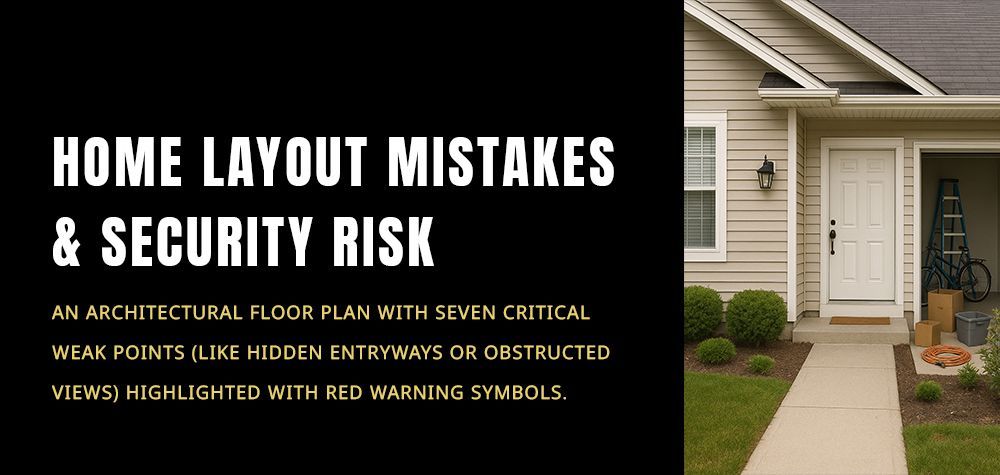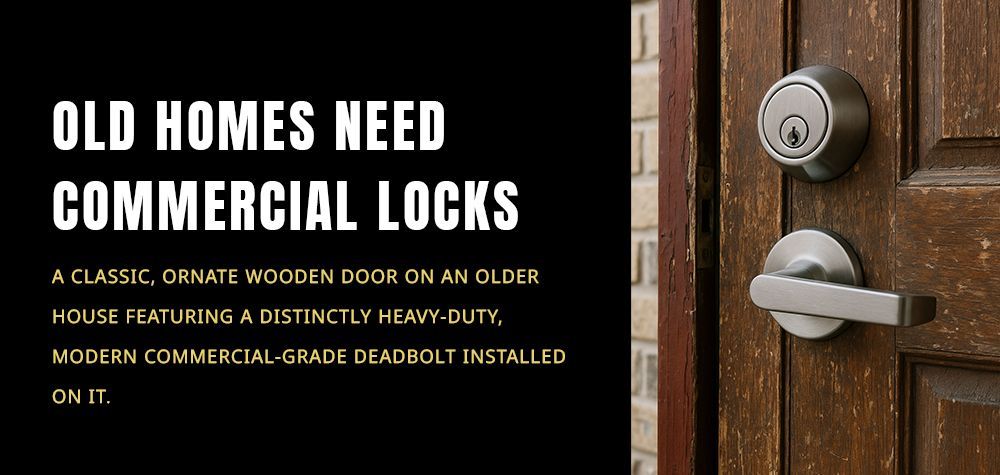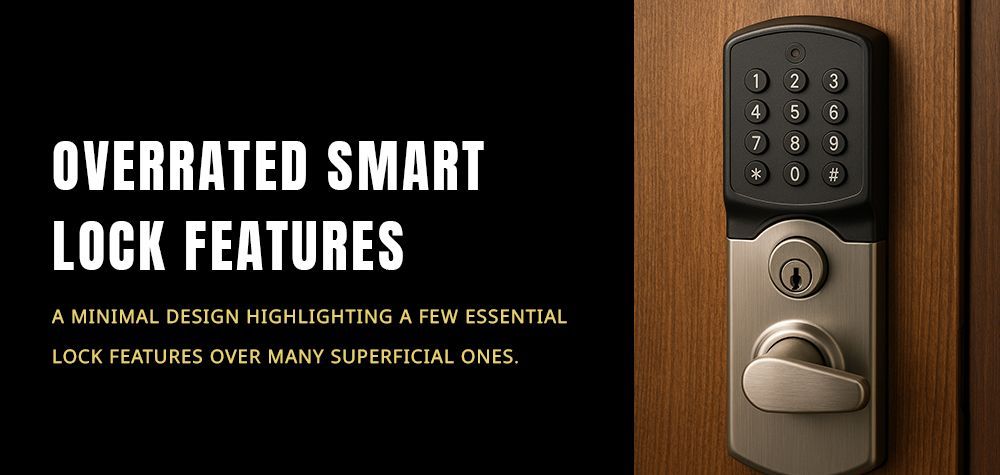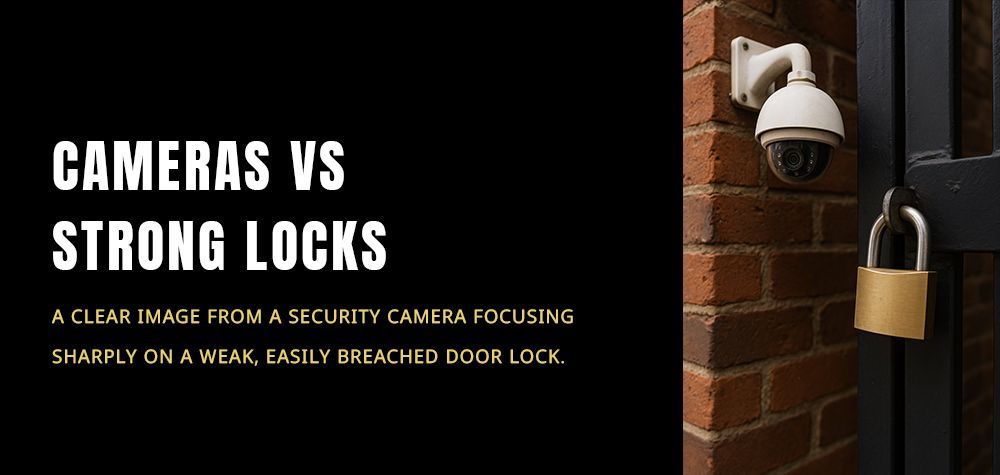The Psychology Behind Where Burglars Try Locks First
Burglary is as much a study of human behavior as it is a criminal act. Thieves are not random in their choices: they look for cues, exploit routines, and use simple heuristics to minimize risk and maximize reward. Understanding the psychology that drives their decisions reveals why certain doors, locks, and entry points are targeted first — and it shows homeowners and businesses how to make their properties far less attractive to opportunistic intruders.
The pros and cons of magnetic door locks vs. deadbolts
Opportunity, speed, and risk: the burglar’s decision rules
Most residential burglars are opportunistic rather than highly professional. Their decisions are guided by three overriding rules: find easy access, move fast, and avoid detection. These simple priorities shape every choice they make. An unlocked or flimsy lock signals a fast payoff with low risk, while a reinforced deadbolt or visible alarm system forces the thief to reassess and often move on. In other words, the easiest path usually wins.
Research into burglary patterns and offender interviews consistently shows that burglars do a quick scan from the street or sidewalk. They note obvious cues: is someone home, are lights on, can a door be forced without noise, is the yard cluttered or overgrown for concealment? These quick impressions often determine which lock they will try first. A visible, easily reachable latch or a sliding door with a cheap cylinder becomes more attractive than a heavy front door with a Grade 1 deadbolt and reinforced frame.
First targets: what burglars test before anything else
Front doors are frequently tried, but not always first. Burglars often start with the least risky, most accessible points, which commonly include back or side doors, garage entry doors, and ground level sliding glass doors. These locations tend to be quieter, less visible to neighbors and passersby, and often equipped with weaker hardware. A shed key left in a planter, a door propped open, or a keypad code displayed on a sticky note all send the same message: this property is an easy target.
Windows and doors with glass panels are another favorite. Where a thief can break glass to reach a thumb-turn from the inside, they will often exploit that vulnerability rather than attempt a noisy forced entry on a reinforced door. Similarly, mail slots, pet doors, and even poorly secured basement egress points are tested quickly because they offer low-effort access.
Cues burglars use to infer lock weakness
Burglars read the environment for signals about a property’s security posture. Some of the strongest cues include visible cheap hardware, rusted or misaligned doors, and locks with exposed screws or thin strike plates. A lock that wobbles when the handle is jiggled, a warped door that gaps open slightly, or a padlock with a thin shackle all tell the same story: this is not a hardened target.
Conversely, strong signals of resistance deter many burglars outright. Security cameras in plain view, motion lighting, reinforced strike plates, and even well maintained landscaping that eliminates hiding spots communicate risk. A prominently displayed alarm company sticker or a modern smart doorbell with visible camera lens is often enough to make a quick opportunistic thief choose another target.
Routine, habit, and timing: when burglars strike
Timing matters. Burglars prefer windows when occupants are unlikely to return quickly and where escape routes are clear. They learn neighborhood patterns—trash day empties, work schedules, and even school calendars—so a house left with cars gone and curtains closed looks attractive. The psychology here is simple: predictable routines create predictable windows of low risk.
They also rely on habitual behaviors of residents. Doors left unlocked, spare keys hidden in common places like under mats or flower pots, and keypad codes shared via text create repeatable opportunities. A person who routinely leaves a basement door propped for airflow or an upstairs window open in summer is signaling, through habit, that security is not a priority.
The role of tools and knowledge in lock selection
A burglar’s toolkit influences choices. If someone carries a crowbar and plans to kick a door, they will seek an entry point where that method is most likely to succeed. If they rely on lock picking or bump keys, they will target pin-and-tumbler cylinders known to be vulnerable. Experienced burglars may know which lock brands or keyways are easily manipulated; even inexperienced offenders pick up common knowledge about weak locks by watching others or from online tutorials.
That means visible, standardized high security features have two effects. First, they physically increase the time required to break in. Second, they change the cognitive calculation in the burglar’s head — a longer time equals greater risk of detection, and greater risk often equals abandonment.
Can a locksmith break a smart lock without destroying it?
Examples from typical break ins
A common pattern often seen in police reports and case studies starts with a back or side entrance. The intruder approaches from an alley or a backyard to avoid neighborhood visibility, tests the sliding glass door or the inexpensive deadlatch, and gains entry without alarm. Another scenario involves garages: a thief slips through a garage service door or forces the garage opener, then uses the internal door to access the house. In urban row homes, the front stoop may be tried last because it is closer to neighbors, while in suburban homes a quiet rear door is tested first.
A subtler case is the “social engineering” break in: a perpetrator posing as a delivery person or tradesperson uses conversation and distraction to get a homeowner to open a side entrance. In such instances the first lock tried is the one the resident chooses to operate.
Why some locks are repeatedly targeted: flaws and psychology
Some locks are targeted time and again because their flaws are visible and widely known. Cheap spring latch locks that can be forced with a credit card, standard padlocks with exposed shackles, and low grade cylinders that accept bump keys all create a psychological signal that this property yields quickly. The visual cue matters. An intruder does not want to test a lock and find it takes ten minutes and makes noise. They want four or five seconds of manipulation at most.
Manufacturers have responded with anti-snap, anti-bump, and anti-drill cylinders and with reinforced hardware. But if those features are not present or not obvious from the exterior, the burglar’s heuristic will favor trying that lock first.
How to change the burglar’s mind: practical prevention that alters psychology
Security is as much about perception as reality. Making your property look and feel harder to penetrate changes the burglar’s instant calculus. Replace flimsy knob locks with Grade 1 deadbolts, install long screws in the strike plate and hinges, and fit anti-snap cylinders on exposed locks. Strategically place visible cameras and motion activated lights at likely approach routes. Keep landscaping low to eliminate hiding spots so a thief cannot loiter unseen.
Use routine changes to reduce predictability: stagger lights with smart bulbs, avoid always leaving the same window propped, and do not advertise vacancy on social channels. Remove obvious hiding spots for keys, and if contractors need access during renovation, issue temporary digital codes or have a trusted manager control entry rather than handing out copies of house keys.
Layered defenses and the art of delay
The most effective tactic is layered defense: combine mechanical strength, visible deterrents, and operational habits that increase the perceived risk and time cost for intruders. A thief who faces a reinforced deadbolt, a secondary surface lock, a camera watching the yard, and neighbors who notice unusual movement will usually move on to an easier target. The goal is not to make your home impervious but to shift the balance of expected reward versus expected risk.
Behavioral interventions: managing human elements of security
Simple behavioral changes can matter as much as hardware upgrades. Teach family members and tenants to close and lock doors behind them, to avoid leaving codes on sticky notes, and to be cautious about social media posts that reveal long absences. For landlords and businesses, track who has access and rotate codes or change locks when staff leave. These actions directly remove the cues burglars use to infer ease.
Final thoughts: read the cues, change the cues
Burglars are less sophisticated than many imagine, but they are excellent at reading cues. Their priority is always the same: low effort, low risk, high reward. By understanding the psychology behind where they try locks first, property owners can take targeted steps to change those instant judgments. Reinforce the weak points, make the property look occupied and monitored, and alter the routines that invite crime. Even modest changes shift a burglar’s mental map and often save you from being chosen at all.
Suppose you want a professional assessment that focuses on both the physical weaknesses and the behavioral patterns burglars exploit. In that case, a security audit from a qualified locksmith such as Brothers Locksmith will identify immediate, cost effective improvements tailored to your home or business.
Call Us Any Time!


